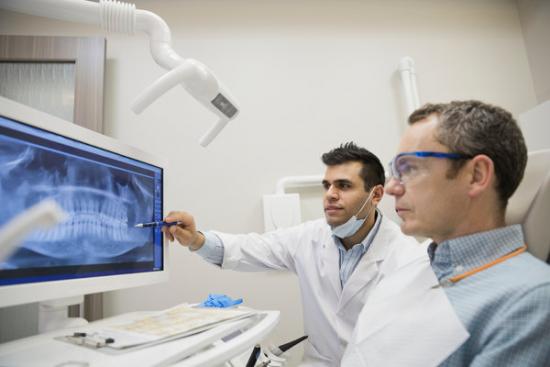
Why Does My Dentist Give Me So Many X-Rays?
Q. My new dentist gave me 22 X-rays yesterday (bitewing and full mouth) plus a panoramic. He says he does this to all patients. This seemed ridiculously unnecessary and dangerous. Could you give me info on this?
A. It sounds as if your dentist’s plan was “overkill,” especially since ordering this many X-rays appears to be routine for him, said Dr. Sarah Dirks, a dentist in private practice in San Antonio, Tex., who cares for many older patients.
Dentists should not rely on a blanket policy on X-rays for all patients, according to guidelines set out by the American Dental Association. Instead they are supposed to inspect each mouth for cavities or gum disease and then recommend specific X-rays for specific reasons.
“It has to be personalized,” said Dr. Analia Veitz-Keenan, the director of evidence-based dentistry at New York University College of Dentistry. “It’s not one size fits all.”
While dental X-rays account for less than 3 percent of all the radiation that Americans get through medical imaging, every effort should be made to minimize their use. Damage from repeated exposure to radiation from medical imaging can accumulate over a lifetime, and the more radiation a patient receives, the greater the chances of developing cancer.
There are various types of dental X-rays, including:
■ Bitewing X-rays, which deliver a relatively low dose of radiation and can reveal cavities between teeth, an area that dentists can’t visually inspect. By the time that decay is visible to the naked eye, a root canal may be required. They are called bitewings because you bite down on a wing-shaped device to hold the X-ray film in place.
■ Panoramic X-rays, which require a special machine that rotates around the head to provide a detailed image of all the teeth and the underlying bones in a single X-ray. They are commonly used to plan extractions or braces, and deliver three to four times the radiation exposure that four bitewings do.
■ Periapical X-rays, which capture images of two or three teeth at a time, down to the root. They can reveal an abscess caused by an infection or root caries, which are lesions at the tooth bottom that are more common starting in middle age. Film is placed on a holder, then put vertically in the mouth, as close to teeth as possible. The amount of radiation compares to bitewings, said Dr. Sanjay Mallya, the president of the American Academy of Oral & Maxillofacial Radiology.
■ Dental cone-beam CT (CBCT) scans, which provide 3-D X-ray images of the teeth, their roots and the jaw but deliver more radiation than conventional dental X-rays. The Food and Drug Administration cautions that CBCT scans should be used only to provide clinical information that cannot be provided by other exams that deliver less radiation exposure.
To establish a baseline when visiting a dentist for the first time, new patients are advised to get X-rays, and the dental association specifies several options. One is to take bitewings of the back teeth along with a panoramic X-ray. Alternatively, dentists can take those same bitewings and a few periapical X-rays for areas of concern.
However, a full mouth series, which involves both bitewings and a periapical X-ray of each tooth, should be reserved for patients with extensive past dental treatment or a mouthful of active decay, according to the A.D.A.







